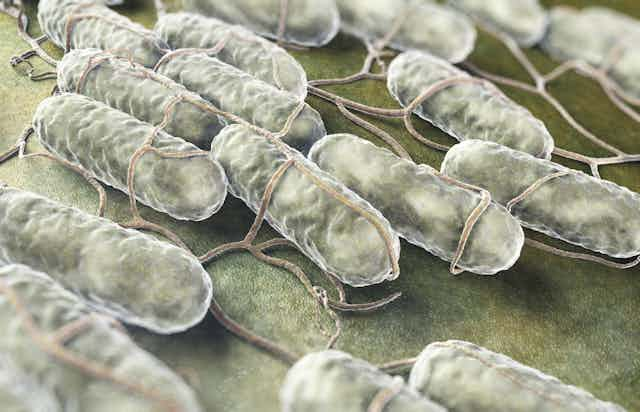“The more I learn, the more I realise how much I don’t know.” Albert Einstein could have written these words about himself, a complex multicellular animal. The more we learn about ourselves and other animals, the more we appreciate that we are not simply an assemblage of the 200-odd cell types that make up the 20 or so organs and tissue types of a typical mammal.
A human being consists of about 10¹³ mammalian cells and, in addition, about ten times more non-human microbial cells – our “microbiome” – the majority of these being many different bacteria. These so-called commensal bacteria, which we carry on and within us, are important for our well-being, although we’re only just starting to learn how important they are: a recent study revealed how chemical signals produced by some of our gut bacteria elicit the production of serotonin, the happiness hormone, in our cells, for example. The emerging picture is that if we want to stay healthy then we need to ensure that we maintain our vast microbiome in a good state.
My own research on these bacteria started a few years ago with a conversation with colleague Miranda Whitten, who had recently returned from work which saw her injecting individual mosquitoes with “interfering RNA”. To learn more about the biology of complex animals such as mosquitoes, scientists use interfering RNA to silence a target gene. Comparing a control animal with another that has had a gene silenced can teach us things about the biological function of that gene and its product.
However, a small mosquito-sized animal is liable to die when it is injected, due to the trauma of being punctured by a needle. And larger insects with longer lives require repeated injections to prolong gene silencing. It was from this that Miranda and I began to explore if commensal insect bacteria could be used as a benign means of continually delivering interfering RNA to their hosts. We discovered that they could – something that will hopefully help us to better control diseases transmitted by insects like mosquitoes.
Friendly bacteria
As we worked on our research, I began to think about the bacteria that colonise human beings and how they could be exploited for medical treatments. A conventional medical approach is to first diagnose a disease and then treat the patient with a drug. Drugs can be delivered in various ways, but typically using oral administration by tablets, pills or a liquid. The drug is subsequently absorbed by the gut and distributed around the body, some of it arriving where it is needed to take action. Where possible the drug should have few side effects on healthy tissue. However, treatment of an aggressive disease such as cancer often requires chemotherapy drug treatment, which is highly toxic to both tumour and healthy tissue, and leads to serious consequences for the patient.

It was this that led me to wonder whether we would be able to exploit bacteria adapted to live on or within humans to deliver medication. The concept embraces two ideas: that a given type of bacteria can potentially target a specific tissue in the body, and that these bacteria can be engineered to continuously produce the therapy once they’ve arrived at their destination and have colonised the diseased tissue. A single administration could potentially provide a continuous targeted treatment.
Given the debilitating side-effects of the current treatments available, we have begun to explore whether this idea could be possible for cancer therapy.
Targeting tumours
Tumours result from an accumulation of genetic changes in our cells and as they progress, they become more aggressive. This can be attributed to the activity of oncogenes – genes which, under certain circumstances, drive the rapid multiplication of cancer cells at the expense of healthy cells. Because of this, pharmaceutical companies have invested large research budgets into how to use interfering RNA to silence these oncogenes. But, as was the case in insects, a major hurdle is delivering this therapy, which has impeded much progress in using this method as a cancer therapy.
We have been using a harmless strain of salmonella bacteria in our research, which other researchers have shown preferentially colonise solid tumours. Much as we did previously in our work with commensal bacteria in insects, we have engineered this salmonella to continuously produce interfering RNA to silence four different oncogenes in advanced prostate cancer cells. This research is at an early stage, but initial results suggest that the interfering RNA can silence these genes.
We are currently testing this new therapy, not only for prostate cancer but other solid tumours too, before any human trials can even be envisaged. If successful it could be a new way to treat a variety of medical conditions, as other bacteria which target other specific tissues can be developed to deliver different therapeutic payloads to alleviate a range of diseases.

